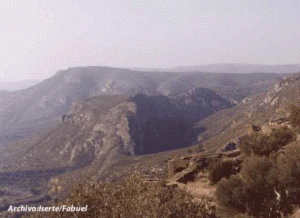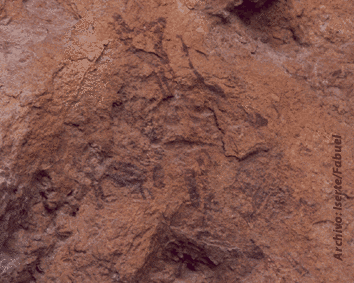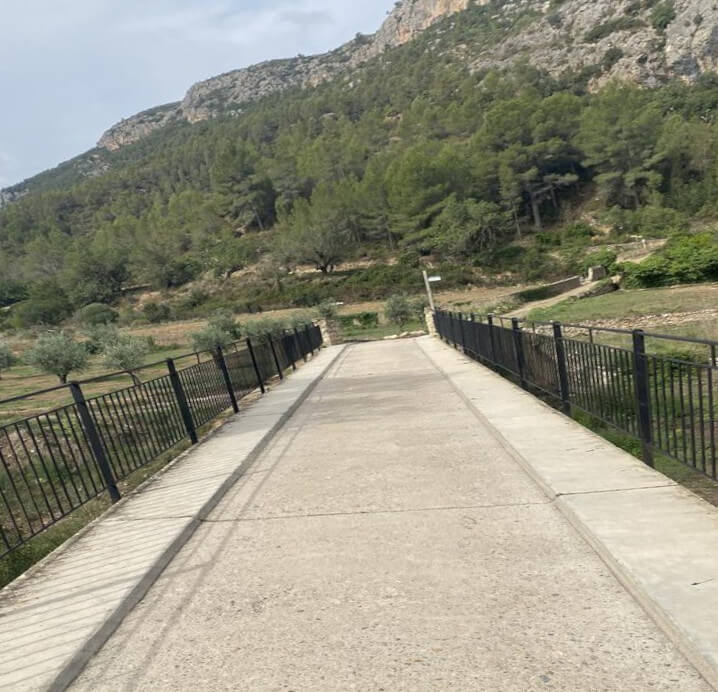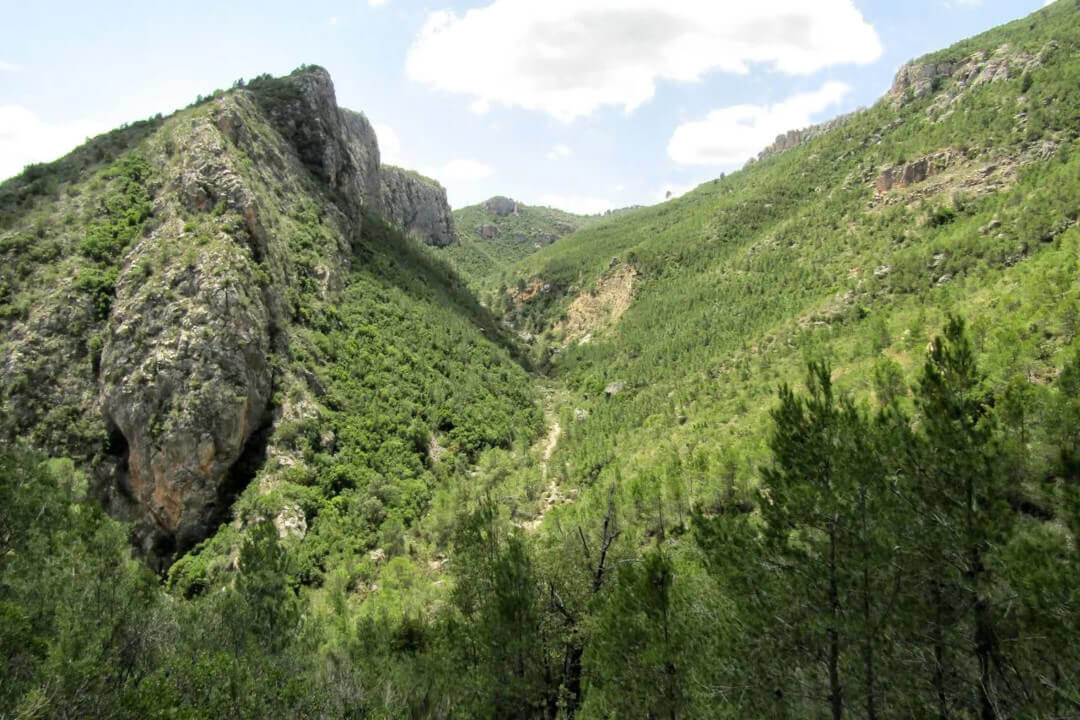The Vallfiguera ravine, located south of the town of Chulilla, is a place that fascinated me since childhood. Its toponym is popularly pronounced as “Falfiguera” or “Folfiguera”. Curiously, despite its name, fig trees are not abundant along its route. Who knows what the landscape was like in the 14th century, when it was named. Until a few years ago, a large fig tree with an impressive crown stood on the path, but the 1994 fire must have destroyed it.
From Chulilla Castle, the ravine looks like a miniature volcano. As a child, I was amazed to discover the entrance and exit of this “volcano”. Inside, it runs along the old Vereda de Castilla, also known as the road to Cerro Negro, which connected Chulilla with Sot de Chera. Today, it has been conditioned for hiking, and another path leads to the corrals of Don Adón.
Upon entering the ravine from the top, you will find the remains of a watchtower or lime kiln, probably built due to its proximity to the border with Castilla and also as a protection system for Chulilla Castle. The vegetation hides it, but its presence can still be felt.

A Journey through Time: Cave Paintings and Prehistoric Life

The magic of the ravine intensifies when you reach the area of the cave paintings. Their location, with somewhat complicated access, has allowed their preservation to this day. Before reaching the paintings, a cave or shelter may have served as a refuge for our ancestors, although it has been used as shelter for livestock, damaging possible vestiges of our ancestors.
In 1998, a set of cave paintings of great historical interest was discovered. The figures represent animals (caprids and bovids) and humans in various hunting and dance scenes. The style is associated with Levantine cave art, dated between 3500 and 2000 BC, and it is believed that the scenes were related to rites of a hunter population. One of the scenes has no parallels in the Mediterranean, which underscores the importance of the find.
Route to the cave paintings of Chulilla

We are going to propose a small route modifying the PR-CV 77 trail to turn it into a somewhat more circular route. Obviously, you can also do the entire route there and back retracing your steps.
The first thing is to park the car. Ideally, it should be left in the lower area by the river. To do this, we will go down the path next to the municipal pool that leads to the Barranquillo neighborhood. From there, we will start a steep descent until we reach a bridge that allows access to the orchards of the Turia river. We will leave the car just before the bridge. If there is no space, there are many parking lots in Chulilla.
We start the route from the bridge over the river, seeing the riverside forest formed over hundreds of years. After crossing the bridge and after about 50 meters, the path forks. We will continue to the left, bordering the mountain downstream.
A short walk along a road will take us to a field of carob trees on the right. There begins the path up to the ravine pass. We will follow this winding path, seeing how we cross through old dryland fields: almond, olive and carob trees that are being replaced by Aleppo pines.
Once we reach the pass, we contemplate the interior of the ravine. At the first bend of the descent, there is the old watchtower (or lime kiln) that barely protrudes two or three spans from the ground, so it is hidden under the undergrowth.

The path has no loss until we see a path that goes down. It will be the path we will return by. We continue straight and in a while we arrive in front of the cave paintings. Access has been modified to improve accessibility, but even so, you have to make a significant effort to climb.
Thinking that there were people living in this place and that they have been able to leave something to be seen by us after 5000 years of rains, droughts, Iberians, Romans, Visigoths, Muslims, Christians,… does not leave us indifferent.
After passing the cave paintings, we continue along the path, and soon we enter the municipal area of Sot de Chera. From here we can reach the Fetge spring, or even Sot de Chera. In this case, we take the path on the left, the one on the right would take us to the Loriguilla reservoir. We will reach the old corrals of Don Adón where there is some holm oak and you can see the houses of the town of Chulilla in the distance. If you continue more or less to the right, you take the main path again to access the cave paintings but in the direction of Chulilla, thus giving a circular character to the route.
Basically, we are outside the Vallfiguera ravine and we are making our way back into it. Soon we reach the pass. Right at that spot we can see both the interior of the ravine and the Turia river valley. At that point there are the remains of a small watch post that would surely serve to support the security of the Castle. The remains barely protrude from the ground, so it is almost impossible to see them if you don’t know exactly where they are.
We proceed to descend to the ravine bed. This area, as well as the subsequent climb, can be very full of vegetation depending on the time of the last clearing in the conservation of the path. After passing through this area, we only have to retrace our steps towards Chulilla
This tour of the Vallfiguera ravine allows us to connect with the nature and history of Chulilla, discovering a landscape that has witnessed life and art since prehistoric times.
You can visit the track of the route in which you start from the Peña Mosen parking lot and also at the end you visit the area of the Caves of Chulilla and its viewpoint over the Turia river